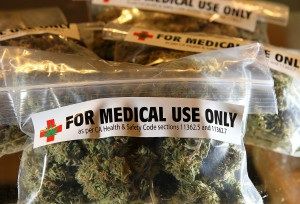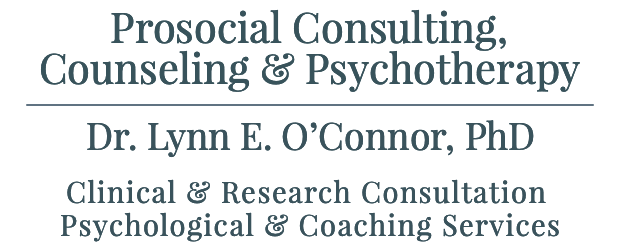Update on Addiction, Marijuana and Legalization
The academic and political war over drugs wages on. As Colorado and Washington declared marijuana legal and in early August, the New York Times ran a series supporting legalization of medical marijuana (something that has already happened in 36 other states), scientists investigating the effects of mind-altering substances often get little press and the need for research is de-emphasized. A recent editorial in Nature expressed alarm that animal rights activists are demanding that politicians halt support of addiction research using animals, because they believe addiction is a social problem, not a disease to be treated medically.
While the ramifications of addiction are certainly economic and political (as well as horribly personal and familial), it’s of no help to deny the reality of addiction disease. And to be clear: Whereas the debates about the natureof addiction most often are referring to illicit drugs, the most dangerous drug out there is alcohol; legal and used openly everywhere, alcohol is no different from other mind-altering substances. The Centers for Disease Control and Prevention recently published data demonstrating that in Oregon 1 in every 9 deaths were associated with abuse of alcohol, as compared with the national average of 1 in every 10 deaths. Further, a study in Great Britain in 2010 ranked alcohol as the number 1 most damaging drug, followed by heroin as number 2, and speed as number 3. Marijuana however was 8 on the list, in terms of potential to harm.
Addiction, no matter what the mind-altering substance, is a medical disorder significantly altering normal brain functioning and physiology, most often resulting in dysfunctional personal, social and economic behaviors. Addiction ends up harmful on socio-economic/political levels, however, it begins in the brain of individuals. Nature refers to addiction as the “demand” side of the problem, whereas the “supply” side of the illness lay in social and political areas. In over half of the cases of addiction, there’s a genetic vulnerability; addiction runs in the family. If your father or mother, or any grandparent, uncle, aunt, cousin, or even more distant relative suffered from alcoholism or other drug addiction, you are more likely to do likewise and recreational use of alcohol or other drugs is risky.
Marijuana is a mixed bag. It has legitimate medical uses–for example in wasting disease, as an adjunct to chemotherapy for cancer, for some cases of depression, and as a treatment for pain. There are yet more medical problems for which marijuana is effective, and for sure, more to be discovered as physicians begin to try prescribing it for a wide variety of illnesses that are not effectively treated by other medicines. Furthermore, pot is far less addictive than other “recreational” drugs (alcohol, heroin, anti-anxiety drugs, painkillers etc.); among those who have tried it, only 9 percent go on to full-blown addiction to marijuana. Unfortunately, for the 9 percent along with those who used pot as adolescents, recent studies demonstrate distinct dose-dependent neuronal changes associated with marijuana when used heavily and/or when used as a teenager.

Scientists had already studied changes in brain structures in mice exposed to marijuana –or to what is thought to be the most active metabolite, THC–but only in the last few years have there been equivalent studies of the neuronal effects of pot use in humans. Using MRI, one study published this year compared a group of young adults who used marijuana regularly to an equivalent group of non-users. Looking at density, volume, and shape, they found distinct dose-dependent (or as they call it, “exposure dependent”) changes in the amygdala, the nucleus accumbens and connected structures. To translate, they found significant differences between users and non-users in neuronal structures related to emotions, emotional learning, motivation, and what is often called “the reward” or “pleasure” (the nucleus accumbens), that has been found significant in other addictions.
Another study, also published in 2014 and using MRI, compared heavy to occasional pot smokers, finding numerous connected structures related to emotions, learning, motivation and the reward center–that is the ability to feel pleasure–were altered with heavy use, or with use during adolescence. Differing from the first study that focusing on users compared to non-users, the design of the second study made clear that the heavier the use of pot, the greater changes in neuronal structures. Finally, research published in July in the Proceedings of the National Academy of Sciences, compared heavy marijuana users to controls (people who, at most, smoked marijuana once a month) finding the users had significantly lower responses to methylphenidate (otherwise well-known as Ritalin, a stimulant that produces dopamine and that is used in the treatment of attention deficit /hyperactivity disorder.) Given the same dose of methylphenidate, heavy marijuana users compared to non-users experienced a lesser “high,” less restlessness and anxiety, as well as less physiological reactions such as elevation in heart rate and diastolic blood pressure, another indication that their reaction to a dopamine elevating drug was dampened.

It is well established that alcohol, opiate and stimulant abusers produce less dopamine, the neurotransmitter associated with pleasure and motivation. In this recent investigation it appeared that while heavy pot users had the same amount of dopamine available, they were less able to make use of it. This suggests that marijuana, along with alcohol, opiates and stimulants, disrupts dopamine circuits, albeit in a different way. Prior to the study all participants were measured on depression, anxiety, negative and positive emotionality. Pot abusers were significantly higher in negative emotionality and lower in positive emotionality –that is they were higher in proneness to anxiety and other negative emotional states, and lower in capacity to experience pleasure from non-drug related experiences. To summarize–heavy pot use appears to lower response to dopamine, crucial for experiencing well-being and motivation, suggesting that heavy marijuana users suffer the same dysfunctional changes in the dopamine circuit, as people addicted to opiates and other drugs including alcohol.
This evidence of the neurological (not just psychological) effects of heavier use of marijuana further suggests that pot most certainly can be addictive, affecting motivation, emotions and pleasure equivalently to use of other recreational drugs (including alcohol). Since these studies have no data on the study participants prior to their marijuana use, we don’t know if the population vulnerable to pot addiction differs neurobiologically before starting to use marijuana, in which case the conclusion that marijuana led to these differences may be questioned. Perhaps the lack of ability to feel pleasure and to ward off negative emotions pre-dated their abuse of marijuana, or led to it in the first case. Nevertheless, the argument from animal rights activists that addiction is not a disease but is instead a social problem and therefore should not be studied using non-human animals first and then people, seems off-base in light of these findings. Even relatively less harmful marijuana addiction is at least associated with neurobiological differences that account for the problems that clinicians deal with; the amotivational syndrome, difficulties in learning, in emotion regulation, in decision-making or executive control, and in the ability to experience pleasure.
As clinicians treating addictions already know from single-case anecdotal data, pot can be highly addictive and a life-wrecker. We see the people for whom drug use has become a problem, and we’re unlikely to be working with those who smoke occasionally with no negative effects. That said, we can’t support claims that pot is rarely addictive or that it’s harmful effects are minimal. Nevertheless I support the move to legalize marijuana. Most heavily regulated drugs on the “abuse potential” list are less damaging psychologically and socially than is alcohol. Like the drug alcohol, other mind-altering substances should be legal for adults. The current method of “controlling” drugs turns physicians into state-licensed drug dealers and creates the association with crime. But this is just my opinion. Removing the “control” over recreational drugs –other than to enforce age limits, to avoid teens having easy access to drugs that harm the developing brain—would immediately remove the association between drugs and crime. We have numerous social problems connected to legislating drug use; by putting the law in front of drugs we create the conditions conducive to the emergence of “drug lords” taking over whole nations in Central America for one obvious contemporary example.
Drug addiction is a disease. And marijuana, similar to other recreational mind-altering drugs, has long-term neurological effects, with the potential to be addictive and harmful. We won’t find quick and easy answers to drug-use and drug associated neurobiological, sociological, economic and political problems. Finally, responses to mind-altering drugs are remarkably case-specific despite universal potential. Anyone who is prescribed a benzodiazepine medicine such as Valium, or Klonipin, will over time develop tolerance and become addicted. However there is enormous variation in how long that might take, and at what dose level a drug become dangerous. People need to make their own informed decisions about use of any drug; they need to be supplied with information and their own situation assessed in accord with social and economic circumstances, family history, and psychological state. For many big questions now emerge: Do we try out marijuana, as it becomes a drug, legal as is alcohol in state after state? Do we bring out marijuana as we do wine when we entertain colleagues at a social dinner? This has to be an individual’s personal decision, hopefully after reviewing the most recent findings from a personal perspective.
References
Battistella, G., Fornari, E., Annoni, J.M, Chtioui, H., Dao, K., Fabritius, M., Favrat, B., Mall, J.F., Maeder, P., & Giroud, C. (2014) Long-Term Effects of Cannabis on Brain Structure. Neuropsychopharmacology(2014) 39, 2041–2048
Gilman, J.M, Kuster, J.K., Lee, S., Lee, M.J., Kim, B.W., Makris, N., van der Kouwe, A., Blood, A.J, & Breiter, H.C. (2014). The Journal of Neuroscience, 16 April 2014, 34(16): 5529-5538; doi: 10.1523/JNEUROSCI.4745-13.2014
Kristian Foden-Vencil Oregon Public Broadcasting. Wallowbee.com, June 30, 2014.http://wallowa.com/news/state_regional/study-in-oregon-deaths-involves-alcohol/article_d15d928b-6093-529b-a599-0d4827bc6f1e.html
Nature 506,5, 06 February 2014). doi:10.1038/506005a. Nature
Volkow, N.D, Wang, G-J, Telang, F., Fowler, J.S., Alexoff, D., Logan, J., Jayne, M., Wong, C., Tomasi, D. (2014). Decreased dopamine brain reactivity in marijuana abusers is associated with negative emotionality and addiction severity. PNAS 2014 111 (30) E3149-E3156; published ahead of print July 14, 2014,doi:10.1073/pnas.1411228111
